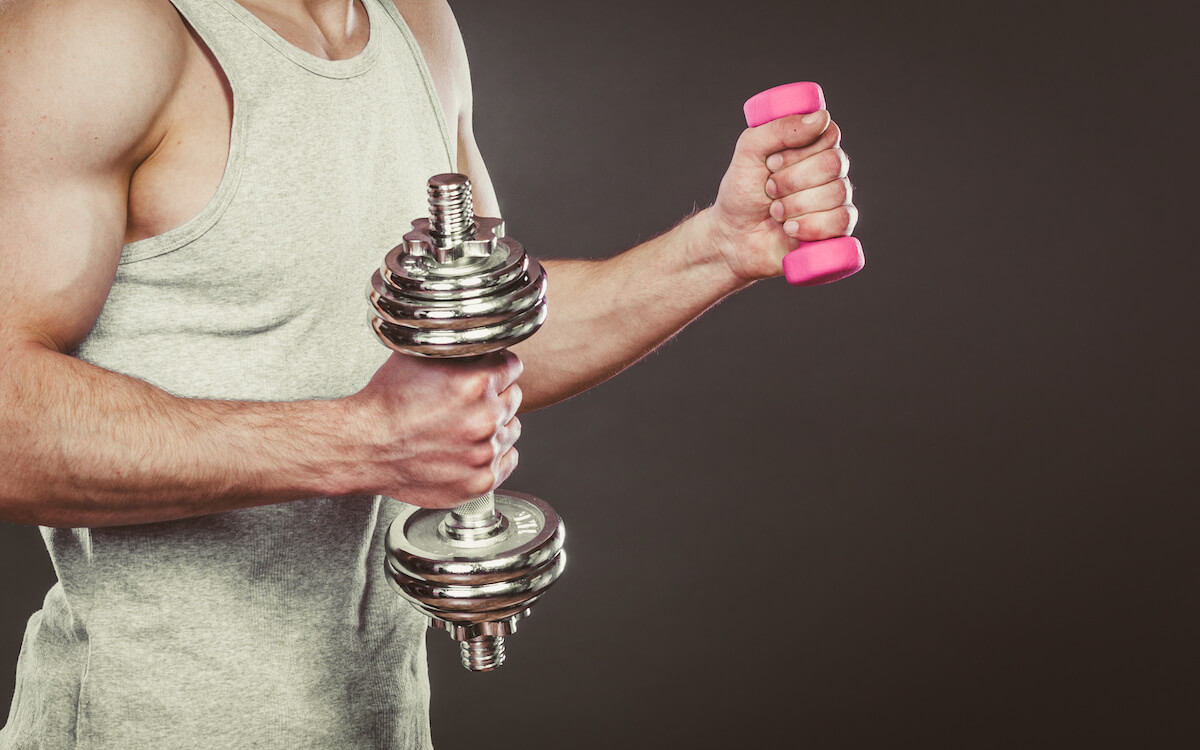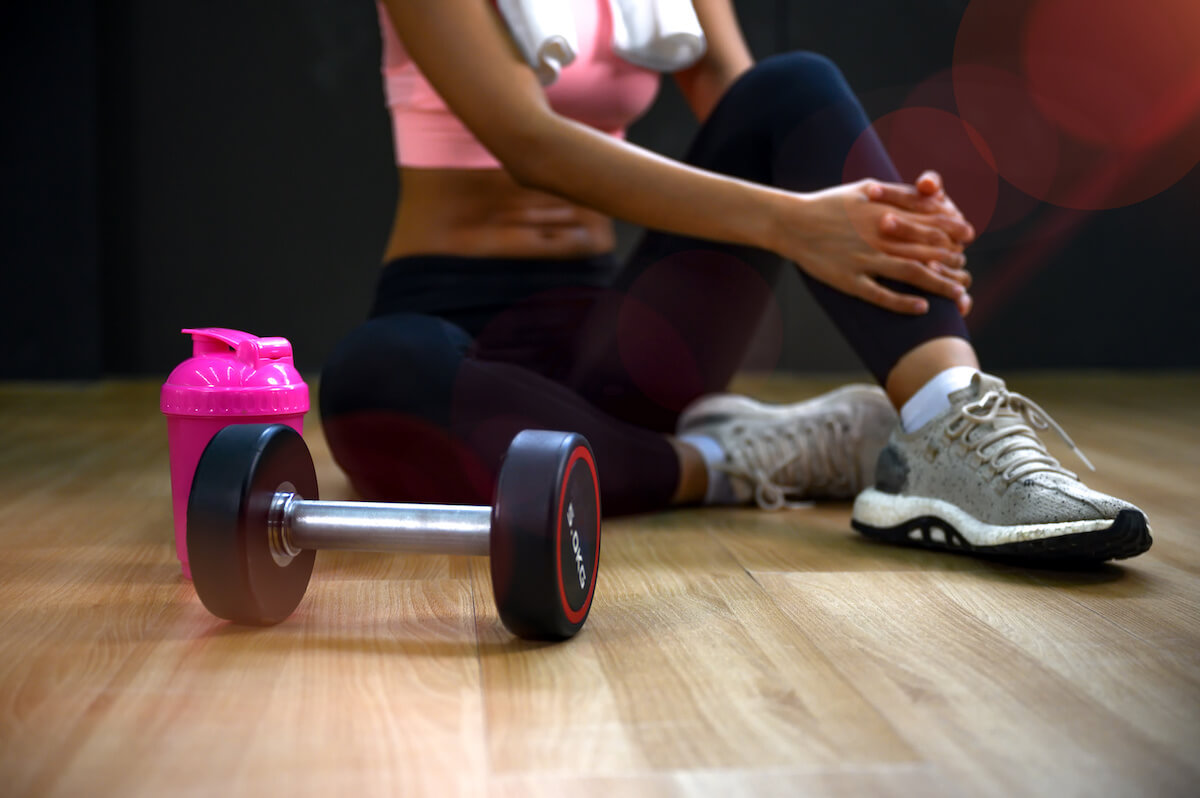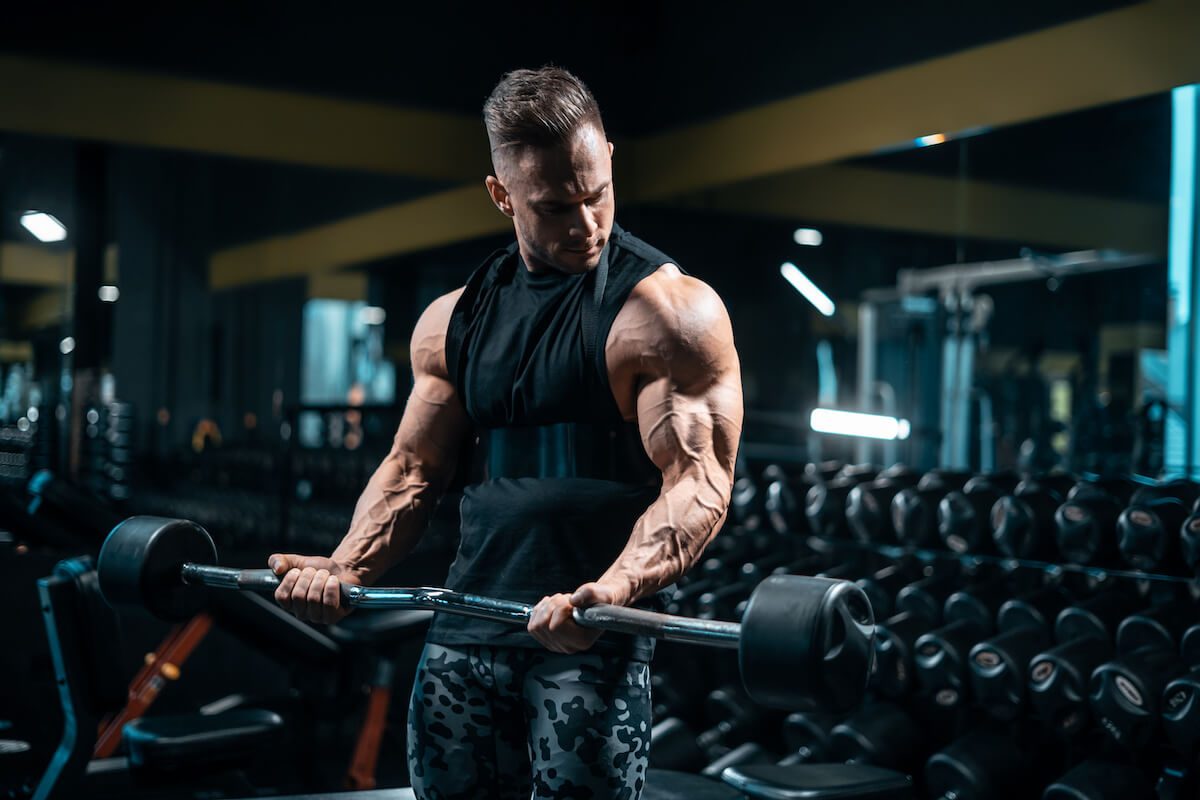
30 May More Reps or More Weight? The Answer Depends on Your Goals
A regular resistance training workout routine can help you build endurance, muscle size, and strength. But if you want to work towards a specific fitness goal, you’ll need to decide whether to add more reps or more weight to improve your progress.
Reps, meaning the number of repetitions you do of each exercise per set, can significantly impact your results. And, of course, the weight you lift also taxes your muscles differently based on how much you’re challenging them.
Generally, higher reps and lower weight will help you with muscular endurance, while a lower rep range with heavier weights will increase muscle mass and build strength. This guide examines the benefits of adding more reps or more weight so that you can design your weight training routine like a pro. Keep reading to learn what to do when you want to build endurance, strength, or muscle size.
Do You Need More Reps or More Weight?
The decision between more reps or more weight will depend on your fitness goals for each workout. First, you’ll need to decide whether you want your training to focus on building muscle or increasing muscular endurance.
- More reps: Increasing your reps and working out with low weight is excellent for endurance athletes, runners, and those aiming for fat loss. This approach helps create a lean look and allows you to do longer workouts, which can also be helpful for muscular endurance.
- More weight: Working with higher weight and lower reps helps build muscle strength and mass. This approach increases the size of your muscles and can create a shredded look. However, contrary to popular belief, it won’t make you bulk up without focused effort in that direction.
Personal trainers often like to include both of these goals in a balanced fitness plan. However, depending on the client’s focus, the program will usually feature more workouts to build endurance or stimulate muscle growth. So, if you’re designing your fitness plan without the help of a professional, consider your focus to find where to start.
Remember, most resistance training workouts are structured with a predetermined number of reps and sets for each exercise. If you’re trying to build muscle, your routines will likely include lifting heavy weights to challenge your body. On the other hand, if you’re trying to increase your endurance, your workouts might consist of higher reps with lighter weights or no weights.
Low Reps, Heavy Weights

Hypertrophy refers to the process of building muscle, which happens due to microscopic tears created in your muscles during activities like resistance and strength training. It takes around two months of regular exercise to see muscle gain in the mirror, but just seven sessions can lead to notable muscle tissue increase.
Working with heavier weights and low repetitions helps build fast-twitch muscle fibers, also known as type II muscle fibers. They produce quick contractions and have a low fatigue resistance, meaning they tire more quickly. As such, they’re not as good for increasing your endurance as type I muscle fibers, which we’ll cover in the next section about high rep, low weight workouts.
Lifters traditionally focus on heavier weights and strength gains to build more muscle tissue and size. These muscle-building workouts emphasize fewer reps and lifting closer to your maximum weight. Here’s an example of what this looks like:
- Novice: 1-3 sets per exercise; 8-12 repetitions per set; 60-85% of one-repetition maximum weight (1RM)
- Advanced: 3-6 sets per exercise; 1-12 repetitions per set; 70-100% of 1RM
These workouts typically include classic strength-training exercises like squats, deadlifts, lunges, bench presses, biceps curls, triceps presses, and shoulder presses. Bodybuilders and powerlifters often use the same moves but with extremely high weights and low repetitions. Their training routine might look more like this:
- Optimized strength gains: 1-3 sets per exercise; 1-5 repetitions per set; 80-100% 1RM
Building larger muscles means that you will burn more calories in a state of rest, increasing your metabolic rate and assisting with weight loss. It’ll also help you build strength and look more toned, with your muscles more visible. And if you’re lifting at bodybuilder and powerlifter intensity with proper supplementation, this approach can help you further increase the size to create a larger, more muscular appearance.
High Reps, Light Weights

Working with lighter weights and high repetitions helps build those type I, slow-twitch muscle fibers. They contract more slowly than type II, but they have a higher tolerance to fatigue. Although they’re not associated with strength and size gains, you’ll be able to perform cardio and strength training exercises for longer with more endurance.
While you might be lifting less weight per repetition, you’re performing more total repetitions per workout. Here’s what a high-rep workout to optimize muscular endurance might look like:
- Novice or advanced: 3-6 sets per exercise; 15+ repetitions per set; <60% of 1RM
Some endurance-focused workouts don’t use weights and rely on bodyweight exercises for resistance. Others will use the same lifting exercises as strength training does, just with lighter weights.
Recent evidence has suggested that you can lift lighter weights (30-60% 1RM) and still induce hypertrophy similar to training with higher percentages of 1RM. The key is to reach what’s known as volitional fatigue during your workout, defined as an inability to continue training due to fatigue.
One way to ensure you reach volitional fatigue is with HIIT, or high-intensity interval training, known for periods of intense exercise with short rests between intervals. HIIT is a cardio workout that may use bodyweight or weighted exercises, and it’s associated with significant weight loss.
Tips to Get the Most From a Balanced Routine
Exercising is hard work, and you don’t want your efforts to go to waste. So here are some of our top tips to get the most from a balanced workout routine:
- Combine approaches: Instead of choosing more reps or more weight, combine both methods to gain endurance and strength. You can emphasize one to focus your efforts while leaving room for the other. For example, you might train high reps and low weight three days per week and add one or two days of low reps and high weight to your schedule, or vice versa.
- Always do a warmup: Whether you’re working with more reps or more weight, always include a warmup routine before exercise. Warming up dilates your blood vessels to ensure your muscles are well oxygenated and increases the temperature of your muscles to aid with flexibility and efficiency.
- Skip the scale: Unless your doctor recommends otherwise, try tracking your progress by measuring your chest, waist, hips, biceps, thighs, and calves instead of by weighing yourself. Muscle weighs more than fat, so weight isn’t the best indicator of how your body is responding. And if you’re working on endurance, you might track your time sustaining an exercise like jogging or jumping jacks without a break.
- Train all major muscle groups: It doesn’t matter if you’re doing more reps or more weight—you’ll want to work all your major muscle groups for an even workout. Your muscle groups include your back and biceps; shoulders, chest, and triceps; quads, hamstrings, and glutes; and your core.
- Use supplements: Supplements help you get more from your workouts. You might opt for performance-enhancing supplements to help before and during exercise. Alternatively, you might consider muscle recovery supplements to help your body repair itself after training. Regardless, look for supplements that use Ingredient Optimized protein, which is optimized for higher bioavailability (better bioavailability means it’s easier for your body to use).
- Readjust when needed: Everyone’s body is unique. Even professional trainers need to adjust their workout routines to get the results they desire, and they do the same for their clients. Every four to eight weeks, evaluate how your exercise routine is working for you and make adjustments as needed.
Remember, exercise is a science, so consider hiring a personal trainer and nutritional specialist if you’re not getting the results you want from your workout. And always consult your doctor before making dramatic changes to your activity level.
Get in Shape, Your Way

Choosing more reps or more weight will help you get in shape based on your personal goals. However, combining the two is often the best approach, as it balances strength and endurance training for a well-rounded level of physical fitness. And remember, don’t be afraid to readjust to get your results faster—exercise might be a science, but your body is unique.
Regardless of which one is best for you, protein supplements can help you achieve your goals faster and support your body better as you progress. We recommend checking out The ioPea from MyProtein, ioWhey Protein from Performix, or Plantein from Kaged Muscle. These products use Ingredient Optimized protein so that you get the protein you pay for every time.


